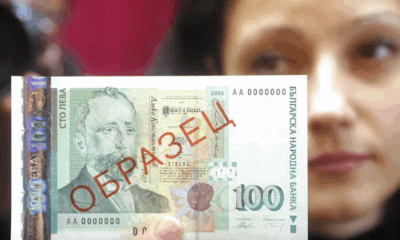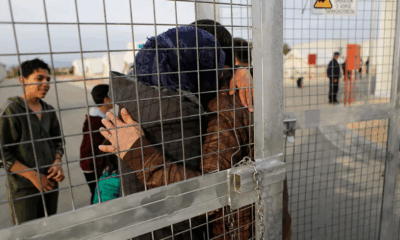News
UK’s First Hydrogen-Powered Homes Open in Scotland Amid Europe’s Clean Energy Push
The UK has marked a major milestone in its clean energy transition with the opening of its first hydrogen-powered homes, showcasing how the fuel can be used for heating and cooking as part of efforts to cut carbon emissions.
Located in Fife, Scotland, the H100 project was officially launched by First Minister John Swinney, featuring three demonstrator homes running entirely on renewable hydrogen. Plans are in place to scale the project up to 300 homes in the coming months.
The initiative is part of a wider European push to expand hydrogen use, with the EU aiming to import and produce 20 million tonnes of renewable hydrogen by 2030.
How Do Hydrogen Homes Work?
Heating accounts for 22% of the UK’s total greenhouse gas emissions, making it a key sector to decarbonize. Hydrogen-powered homes function much like conventional homes, with similar boilers, cookers, and heating systems—the main differences lie in fuel supply and infrastructure.
The transition requires specially designed appliances, such as Bosch’s hydrogen-powered cooking hob, which features an invisible flame. The H100 homes will serve as a testbed for the technology, allowing residents to experience hydrogen heating with minimal lifestyle changes.
Proponents argue that hydrogen is one of the least invasive ways to decarbonize home heating compared to alternatives like heat pumps or district heating, which often require significant home modifications.
Hydrogen Heating in Europe
Despite Europe’s ambitious hydrogen targets, domestic adoption has been slow. Only a handful of small-scale projects have emerged across the continent:
- In Italy, the first hydrogen-powered residential building was completed in 2022, using hydrogen for both heating and electricity generation.
- The Netherlands has connected homes in Lochem (2022) and Wagenborgen (2023) to hydrogen heating, with an 80-100 home project planned in Hoogeveen.
- Finland’s 3H2 Helsinki Hydrogen Hub is developing a green hydrogen facility, primarily for truck fuel, with excess heat used for residential heating.
Is Hydrogen a Viable Solution for Home Heating?
While hydrogen is a clean fuel at the point of use—producing no CO₂ when burned—critics warn that its production remains heavily reliant on fossil fuels.
Currently, only 1% of hydrogen is produced using renewable energy (green hydrogen). The International Energy Agency (IEA) estimates that making all hydrogen green would require 3,000 terawatt hours (TWh) of renewable electricity, equal to Europe’s total electricity demand.
For H100 Fife, the hydrogen supply is derived from offshore wind, ensuring a low-carbon footprint. However, studies have questioned the economic and safety viability of widespread hydrogen heating.
A 2022 report by the Regulatory Assistance Project concluded that hydrogen is less efficient and more expensive than alternatives like heat pumps and district heating. More recently, a 2024 report by the Institute for Energy Economics and Financial Analysis (IEEFA) highlighted safety concerns and warned that hydrogen heating could delay electrification efforts.
“Using hydrogen in homes poses health and safety risks and is an inefficient way to cut CO₂ emissions,” said Suzanne Mattei, energy policy analyst at IEEFA. “It could prolong the use of fossil gas infrastructure rather than speeding up the shift to electrification.”
The Road Ahead for Hydrogen Heating
Despite concerns, hydrogen remains a key part of Europe’s clean energy strategy, with ongoing investments in hydrogen infrastructure and production.
The H100 project in Fife will provide valuable real-world data on hydrogen’s feasibility for home heating, influencing future policy decisions in the UK and beyond.
With hydrogen demand set to rise, the debate continues over whether it is the best solution for household heating or whether electrification should take priority in Europe’s race toward net-zero emissions.
News
Two Dead, Nearly 200 Injured as PSG Title Celebrations Turn Violent Across France

What began as jubilant celebrations of Paris Saint-Germain’s historic UEFA Champions League victory ended in violence and tragedy in parts of France, with two people killed and nearly 200 injured during street festivities that spiraled out of control.
Authorities confirmed on Sunday that a 17-year-old boy was fatally stabbed in the southwestern town of Dax during a PSG street gathering, while in Paris, a man died after his scooter was struck by a car amid the crowded celebrations. Both incidents are currently under investigation.
The unrest followed PSG’s dramatic win in Munich, where the club secured its first-ever Champions League title, marking a milestone in French football history. While fans across the country took to the streets to celebrate, several areas descended into violence.
According to the French Interior Ministry, a total of 294 people were arrested nationwide as of 2 a.m. Sunday. Of the nearly 200 injured, 21 were police officers—18 of them in Paris alone. One officer remains in a medically induced coma after being struck in the face by a firework.
Interior Minister Bruno Retailleau condemned the violence in a statement on social media. “True PSG fans are celebrating a magnificent achievement. Meanwhile, barbarians have taken to the streets to commit crimes and provoke law enforcement,” he said. “It is unacceptable that people cannot celebrate without being endangered by a violent minority.”
Despite the unrest, the majority of gatherings were peaceful, authorities noted, with large crowds celebrating the historic win in cities including Marseille, Lyon, and Lille.
The PSG squad returned to Paris from Munich on Sunday afternoon aboard a Qatar Airways charter flight, arriving at 4 p.m. The team is expected to continue celebrations in the capital with tens of thousands of fans, under heightened security measures.
The violent turn of events has reignited debate in France over crowd control during major sporting celebrations, and how best to ensure public safety without dampening national enthusiasm.
PSG’s Champions League triumph marks a defining moment for the club, which has long pursued European glory. As the team prepares for a hero’s welcome, officials are urging fans to celebrate responsibly and respect public safety.
News
Ukraine Launches Major Drone Assault on Russian Airfields, Hits Over 40 Strategic Bombers

Ukraine’s Security Service (SBU) has claimed responsibility for a large-scale drone strike on four Russian air bases over the weekend, targeting dozens of strategic bombers across vast swaths of Russian territory — from Siberia to the Arctic.
According to Ukrainian officials, the operation, codenamed “Spiderweb” (Pavutyna), was launched on June 1 and struck 41 long-range bombers stationed at airfields in Russia’s Ryazan, Ivanovo, Irkutsk, and Murmansk regions. The attack is being hailed by Kyiv as one of its most ambitious and far-reaching strikes since the beginning of Russia’s full-scale invasion.
“Enemy strategic bombers are burning en masse in Russia,” a senior SBU official said, noting that the operation was specifically designed to cripple Moscow’s airstrike capabilities. “This is a large-scale special operation aimed at destroying enemy bomber aircraft.”
The four airfields targeted were Dyagilevo in the Ryazan region, Ivanovo in central Russia, Belaya air base in Irkutsk — over 4,000 kilometers from the front lines — and Olenya air base on the Kola Peninsula near the Arctic, roughly 2,000 kilometers from Ukraine’s border.
Ukrainian officials described the complex logistics of the operation, which involved covertly transporting drones deep into Russian territory, hiding them until the time of launch, and remotely executing the strikes. While specific details remain classified, Ukraine previously revealed it had developed drones with a flight range of up to 3,000 kilometers, enabling long-range operations like this.
Satellite imagery analyzed after the attack shows the presence of several high-value Russian aircraft types at the affected bases, including the Tu-95, Tu-22M3, Tu-160, and A-50 radar planes. These aircraft have been central to Russia’s long-range missile campaign against Ukraine.
The Tu-22M3, for example, is capable of carrying Kh-22 and Kh-32 cruise missiles at speeds exceeding Mach 4. The Tu-95, a Cold War-era bomber once designed to carry nuclear weapons, has been retrofitted to launch conventional cruise missiles. The A-50 aircraft provides airborne radar surveillance and target coordination for Russian forces.
The scale of the strike underscores Ukraine’s growing long-range capabilities and signals a shift in Kyiv’s strategy to disrupt Russian air operations at their source. President Volodymyr Zelenskyy said he had held meetings with the Ministries of Defense and Foreign Affairs, along with the General Staff and SBU, to coordinate further defense and counter-offensive planning.
There has been no immediate official response from Moscow regarding the extent of damage caused.
News
German Chancellor Merz to Meet President Trump in Washington Amid Global Tensions
-

 Business1 year ago
Business1 year agoSaudi Arabia’s Model for Sustainable Aviation Practices
-

 Business1 year ago
Business1 year agoRecent Developments in Small Business Taxes
-

 Politics1 year ago
Politics1 year agoWho was Ebrahim Raisi and his status in Iranian Politics?
-

 Business11 months ago
Business11 months agoCarrectly: Revolutionizing Car Care in Chicago
-

 Business11 months ago
Business11 months agoSaudi Arabia: Foreign Direct Investment Rises by 5.6% in Q1
-

 Technology1 year ago
Technology1 year agoComparing Apple Vision Pro and Meta Quest 3
-

 Politics1 year ago
Politics1 year agoIndonesia and Malaysia Call for Israel’s Compliance with ICJ Ruling on Gaza Offensive
-

 Sports10 months ago
Sports10 months agoKeely Hodgkinson Wins Britain’s First Athletics Gold at Paris Olympics in 800m






























